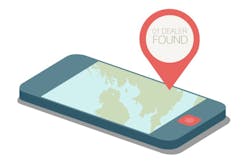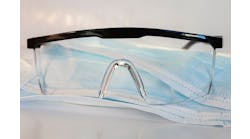We take it for granted that there will be a car dealership around the corner to supply us all with a new vehicle. But what if their existence was under threat, and what might be the ramifications to the collision industry?
Now, I need to put this into perspective, because I’ve set out a terrifying scenario, but how close could we be to this truth? I can’t speak for the North American market, but European car dealers and national sales companies are under a real threat in that their revenues are being eroded faster than you might think. It’s always fascinating what we can learn from businesses across the pond.
I spoke at a conference this week in the U.K. attended by a significant number of top automotive dealers and senior professionals, with representation from the U.S. and other parts of Europe. My speech was about the way in which the supply of parts to the collision industry was migrating away from the OEM to non-OEM and recycled or “green” parts.
I know LKQ has been in the U.S. for some time and has provided amazing solutions to the collision industry. Now they are in the U.K. They purchased a company called Euro Car Parts and recently bought five significant jobber outlets to become two-and-a-half times bigger than their nearest competitor in refinish distribution. They drop off 48,000 deliveries per day, which is more than Amazon over here. And they have 148 branches in a very small country, delivering anywhere in less than 1.5 hours.
Meanwhile, vehicle manufacturers’ national sales organizations make money through only three primary revenue streams. The first is new car sales, but the margins here are low and are under ever-increasing pressure from the Internet. The second is from finance commissions on new car sales, but in many cases, these just prop up the profit from the loss on a new car. So the final income stream is from parts sales.
You might think this is fantastic, but let’s consider the following—70 percent of parts profit comes from parts supplied to the collision industry. The other 30 percent comes from service and hard parts to independents. So a dealership’s primary revenue stream is from collision, but most main dealers are actually shutting their body repair shops, because the door rate is significantly less than for service.
The problem is, if the vehicle manufacturers’ national sales companies make most of their money from collision repair, and many dealers are getting out of collision repair, who is going to buy the OEM parts? Insurers here mandate non-OEM or green parts on most vehicles over three years old. Body shops see more and more retail work because of high deductibles. And guess what? When the consumer pays the bill, they want cheaper parts—non-OEM and recycled come to the forefront.
Add in the influence of LKQ with their outstanding logistics service, and the main dealer is squeezed from all angles. It’s difficult to compete with the service and delivery of LKQ and it’s almost impossible to compete on price. Add to this the challenge of insurance carriers mandating non-OEM parts for older vehicles, and you’ll see the vehicle manufacturers’ genuine parts supply drying up. It gets worse, because we expect to see deals being done with insurers by LKQ to now supply paint, consumables and parts to DRP collision centers.
So, where does this leave the dealer? Well, if the national sales organizations of vehicle manufacturers hardly make money on new cars and almost nothing from finance, and with bonuses generated out of registering new vehicles and parts sales, the dealership’s future seems compromised. Vehicle manufacturers will inevitably have to change their pricing model, which may mean common parts aligned to compete with the aftermarket imports, and nonpopular parts being priced high in order to claw back margin.
We’ve already seen the Volkswagen Group national sales organization in the U.K. set up a facility called TPS (Trade Part Supplies) in order to supply direct to collision repairers, cutting out the car dealer. You can imagine how well that’s gone down!
As I see it, if 70 percent of the profit comes from collision repair parts and LKQ and vehicle manufacturers decide to go direct, how can the dealer make money? And where does that leave the collision repair industry?
This is something to watch in all markets, as it could have a significant impact on the collision repair industry as we know it today.
Jon Parker is managing director of the Byteback Group, a U.K.-based information technology and services company aimed at advancing the collision repair industry. Parker can be reached at [email protected].



